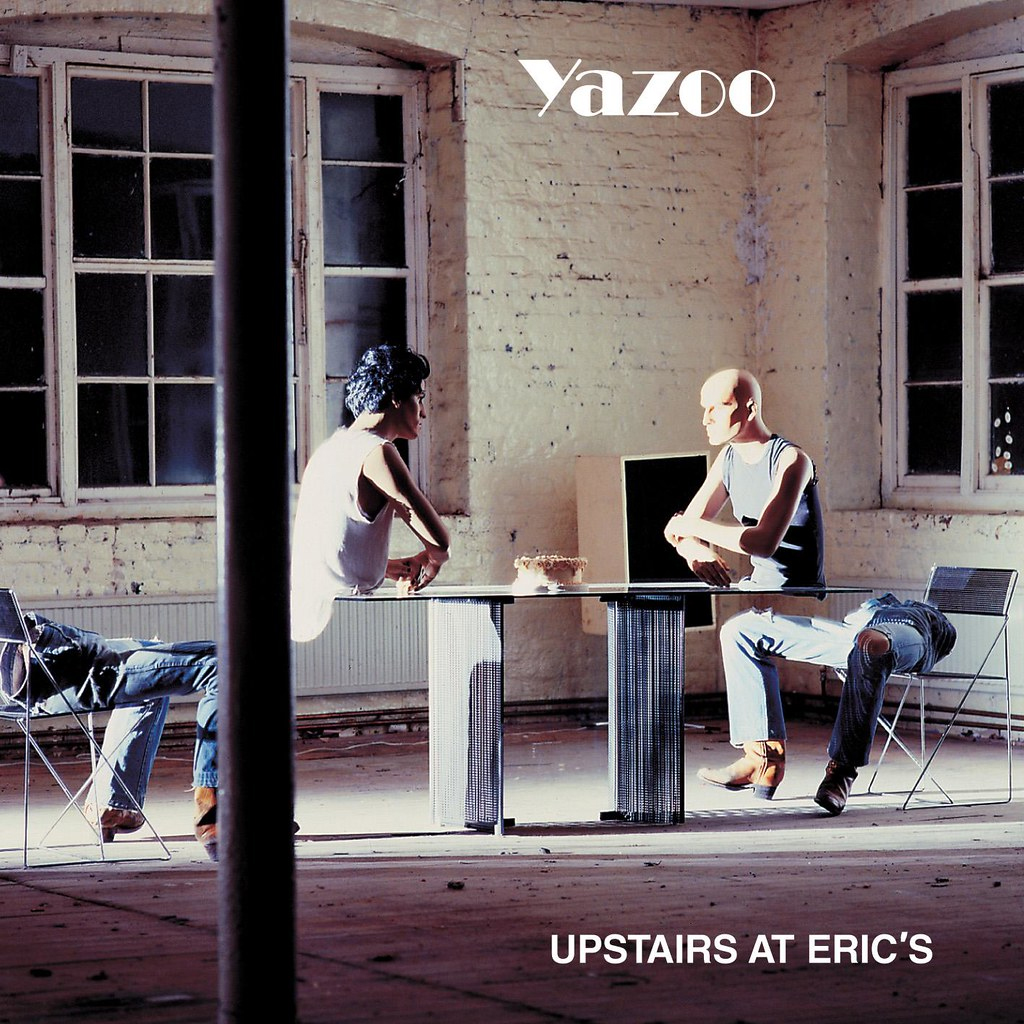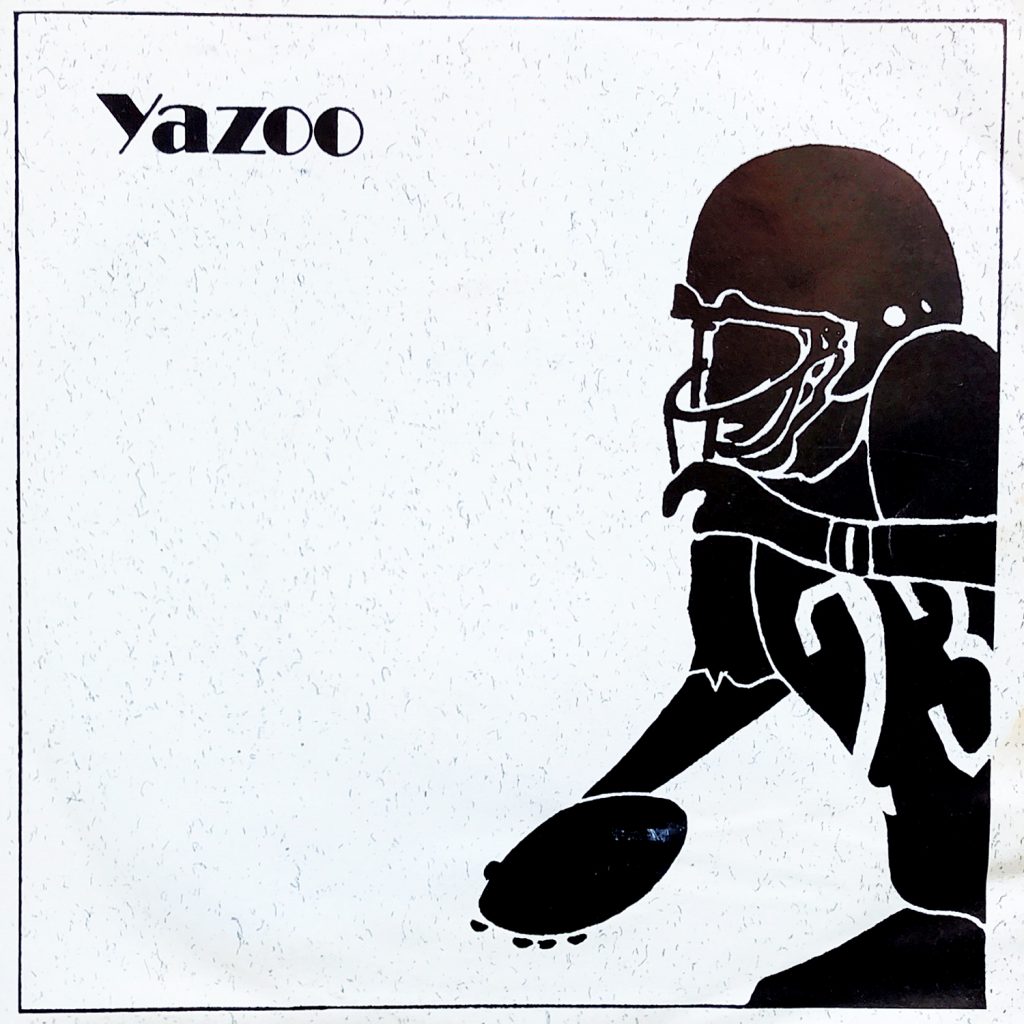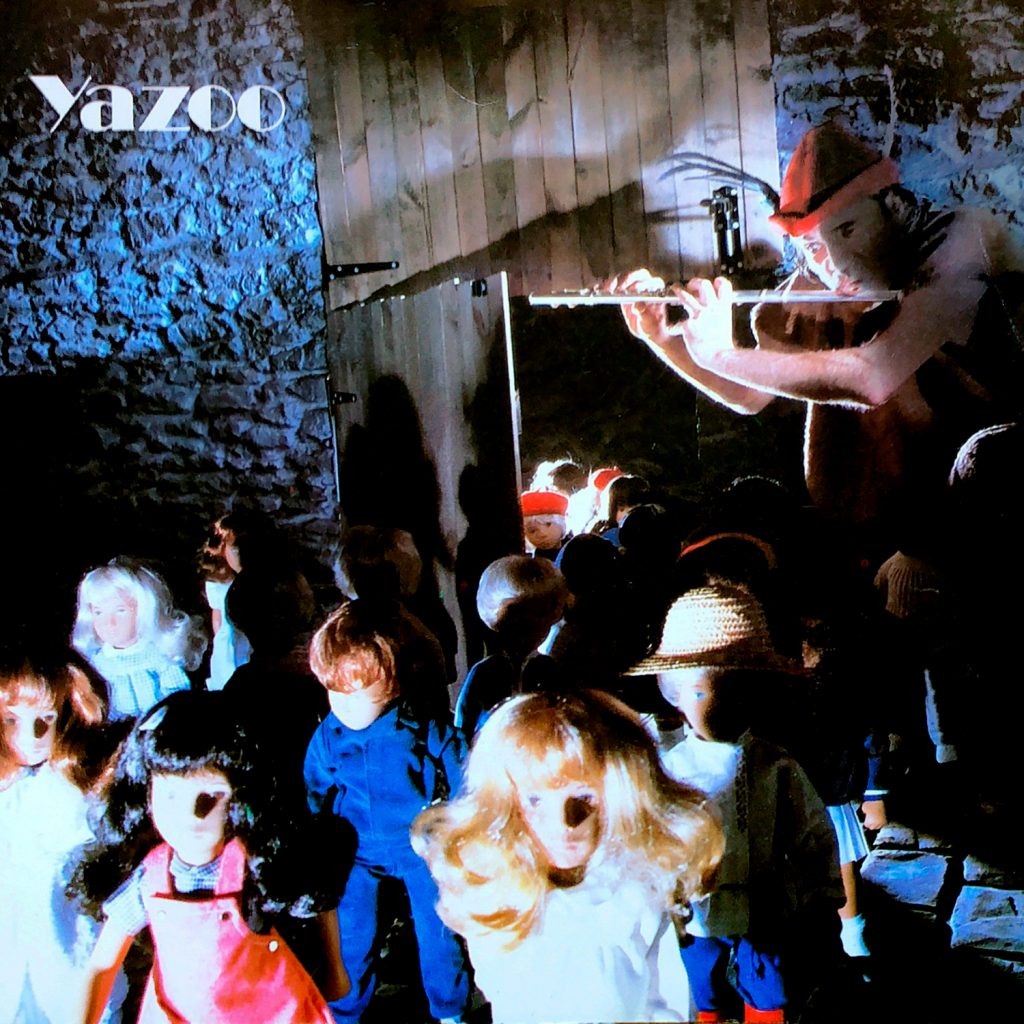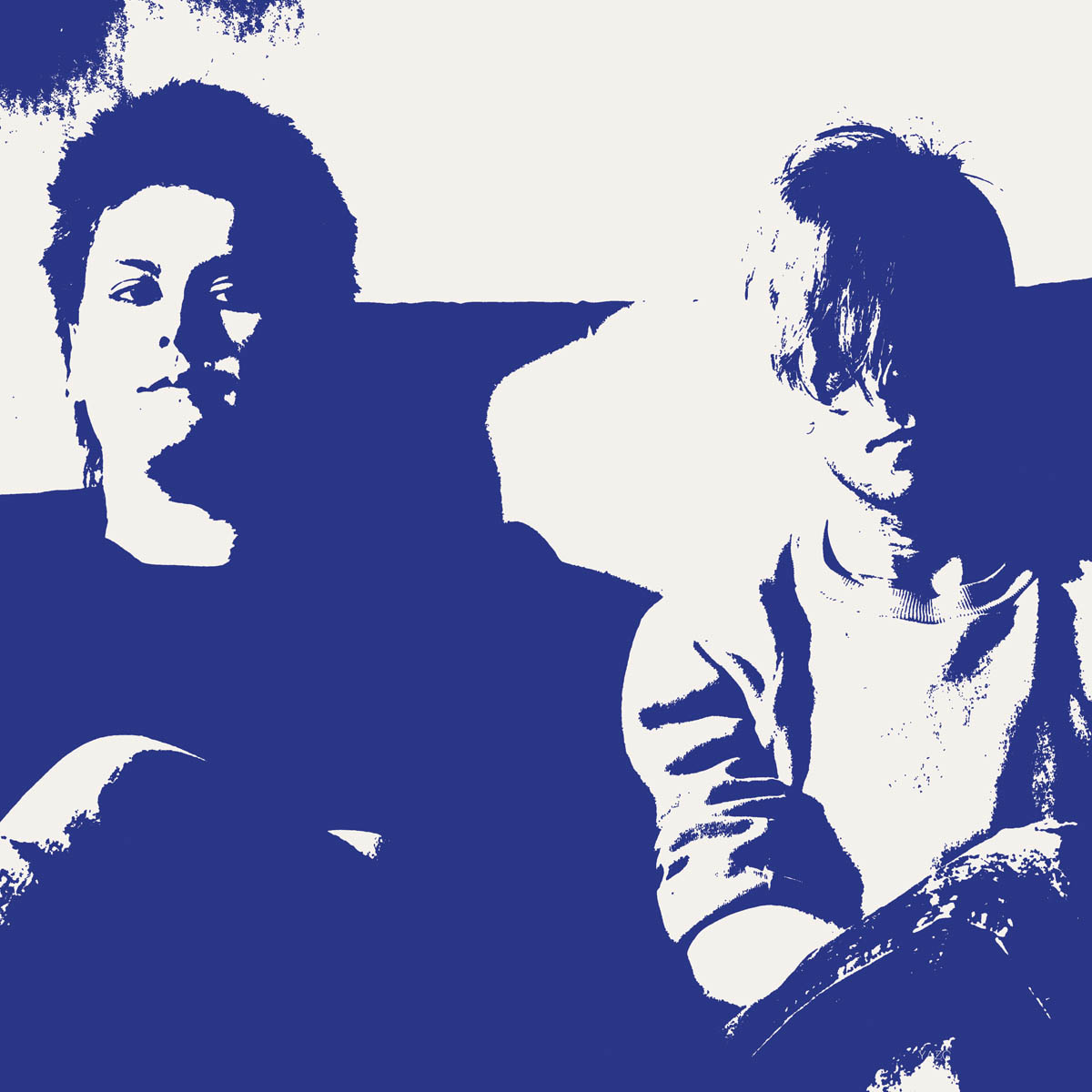Celebrating Yazoo’s Upstairs At Eric’s at 40
By The Recs TK 2 years agoUpstairs at Eric’s by Yazoo is 40 years old today. The Recs pays tribute to Alison Moyet and Vince Clarke’s influential 1982 album and looks at what made it such and enduring synthpop classic.
There can’t be many bands who, within a year of formation, create a debut album that influences generations of producers, bands and songwriters. The list compiled by The Recs is so short that it contains just one word: Yazoo. And the album in question is their wonderful début, Upstairs At Eric’s.

Both aurally and visually, Yazoo were aesthetically at odds with the pouting glamour of every backcombed Tom, Dick and Duran Duran of the era. Safe behind his synths, Vince Clarke’s bleached fringe denied the world full eye contact. Front and centre, with a spiky haircut, punk eye-makeup and a homemade dress, stood Alison Moyet. Except we didn’t call her that yet. She was Alf. Statuesque and unreadable, her eyes didn’t track the camera: it followed her. And then she opened her mouth and the rest of her beauty was delivered. That voice. That gloriously mellifluous instrument. That arresting, soulful ache was – is! – incredibly eloquent and empathic. It mines meaning and feeling from lyrics that, on paper, might seem incapable of delivering. And that’s what greeted the public when Yazoo released their debut single, Only You, in the Spring of 1982. The juxtaposition of crisp electronics, a pretty melody, and a restrained bluesy vocal, destroyed the notion that electronic music could ever have an emotional dynamic. The track sounded like an evergreen and the future all at once, and time has cemented Only You’s status as a classic. Screenplays and soundtracks continue to be enhanced by its ability to convey an ache that scripts can’t fully articulate. It is a timeless beauty.
It soon emerged that Yazoo – Vince and Alf, a sitcom incongruity at first glance – hardly knew each other. Having performed punk and pub-band blues, Moyet’s burgeoning creativity saw her place a small ad seeking a band to sing with. The sole respondent was Depeche Mode escapee, Vince Clarke. He, in turn, was keen to demonstrate that he could sustain a future without his former band and had a song for which he needed a singer. Having been in the audience of a few Moyet-fronted gigs, Clarke knew she could sing. He presented her with Only You and they quickly recorded a demo. Clarke’s label (Mute) liked the track without immediately recognising its potential. It took a publisher’s enthusiasm to make them really sit up and take notice. The single was commissioned and quickly released. It shyly entered the lower reaches of the chart before taking increasingly confident strides to the Number 2 position.


The single’s chart tenure ensured a strong platform for the release of Yazoo’s second single in July. A zesty pop banger, Don’t Go upped the tempo and allowed Moyet’s remarkable pipes to work at full throttle. The track filled dancefloors, energized the airwaves and raided the Top 3 again. It also afforded Yazoo their first video, a clip fuelled by their sense of humour that helped round out the group’s personality and image for the public.
Moyet and Clarke had gotten down to the business of writing and recording more material as soon as Only You was greenlit and, in a few short months, an album was ready. Youth and clashing musical influences contributed to the alchemy. Strictly limited studio time meant that production focus had to be laser sharp. There would be no unnecessary chin-stroking or over-indulgent showiness in the arrangements. Producers Eric Radcliffe and Daniel Miller sliced up their available time wisely and efficiently. Despite their disparate tastes, Moyet and Clarke found a musical entente that yielded extraordinary dividends.
Named partly after an Essex club called Turkan’s which happened to be upstairs and partly after Eric Radcliffe (the owner and engineer of Blackwing Studios where the album was recorded), Upstairs At Eric’s emerged in August 1982. The album fairly crackles with energy as it swoops through dance cuts and moody wallows, repeating no themes, playing no trump card twice. While the occasional flashes of naivete betray the writers’ dearth of life experience, the sincerity at play is undeniable.
The set allowed pure pop to rub shoulders with unprecedented electro/blues hybrids and some experimental moments in ways pop audiences had not been treated to before. Clarke had already established his songwriting credentials on Depeche Mode’s smash hit début album. His DNA strengthened in the meantime, and is perceptible on the bubblegum of Bad Connection, the simple beauty of Only You and the earnestness of Tuesday. I Before E Except After C is a choppy collage of disconnected spoken-word sections over a slowly building synth track. It wobbles slightly on the tightrope between pretension and fun, but remains a fan favourite. Flashes of the same approach added some vim to the moody In My Room.
By contrast, Moyet was an unknown quantity as a writer. And yet her compositions are among the album’s finest. The first one encountered is the arresting Midnight. Boldly opening with an acapella verse, the song glides on brittle synths through emotive bluesy choruses to a jazzy scat coda. Over on side 2, her compositions bring tempo and a little necessary astringency. Goodbye 70s takes aim at the ersatz punks who used the movement for fame, while Bring Your Love Down (Didn’t I) wraps up proceedings in a funky dance workout, complete with audience baiting call-and-repeat vocals. But before the listener is permitted that let-your-hair-down moment, Moyet flays and slays with the aching gothic torch song, Winter Kills. It is a remarkable piece that that brought weight and nuance to the set.
The striking artwork placed two dismembered mannequins at a table in an austere loft apartment setting. The image offers as many interpretations as the observer can invent. It became one of the era’s most iconic sleeves.
Upstairs At Eric’s took the charts and playlists by storm. Despite its very Eurocentric sound, it caught the ears of Stateside tastemakers. Over there, Only You’s B-side, the Clarke/Moyet co-write, Situation, was recognised as the pop gem it is. Dance supremo, François Kervorkian, teased out the track’s innate groove and shimmer, turning it into a sophisticated floor-filler. Without the group’s permission, it emerged as their US debut single and replaced Tuesday on the album in that territory. And while Situation might almost have been written off by its creators at first, it has found seemingly eternal sampled life on dance tracks in every subsequent decade. That gloriously throaty Moyet laugh from the intro has enriched many a track over the years.
In a time where albums were routinely milked dry for singles, Upstairs At Eric’s is strange in that only two A-sides were issued. While, say, Bad Connection, In My Room or Bring Your Love Down might have done creditable standalone business in 7” form, it was not to be.

But the popularity and quality of Upstairs At Eric’s ensured there was public demand for more Yazoo. The autumn/winter UK tour seemed to add to a promised future. Privately, however, Clarke hadn’t really looked much further than Upstairs At Eric’s. Mute were concerned that their protégée’s reputation would suffer if he were to bail on a second band so quickly and worked to keep him on board. But while Mute steadied the course of the good ship Yazoo for a little longer, they may have overlooked the personal disconnect between two such young and mismatched humans who were the vital heart of the enterprise. But why wouldn’t they try to engineer a second lightning strike when the first flash had been so spectacular? And while there was another firebolt on the way, thunder continued to rumble behind the gathering clouds.
If that’s put you in the mood, why not have a listen to this groundbreaking electronic album?
Author Profile
- The Recs TK
Latest entries
- 20 August 2022MusicCelebrating Yazoo’s Upstairs At Eric’s at 40
- 4 April 2021MusicBucks Fizz: Ten Top Tunes
- 3 April 2021Music40 Years of Bucks Fizz
